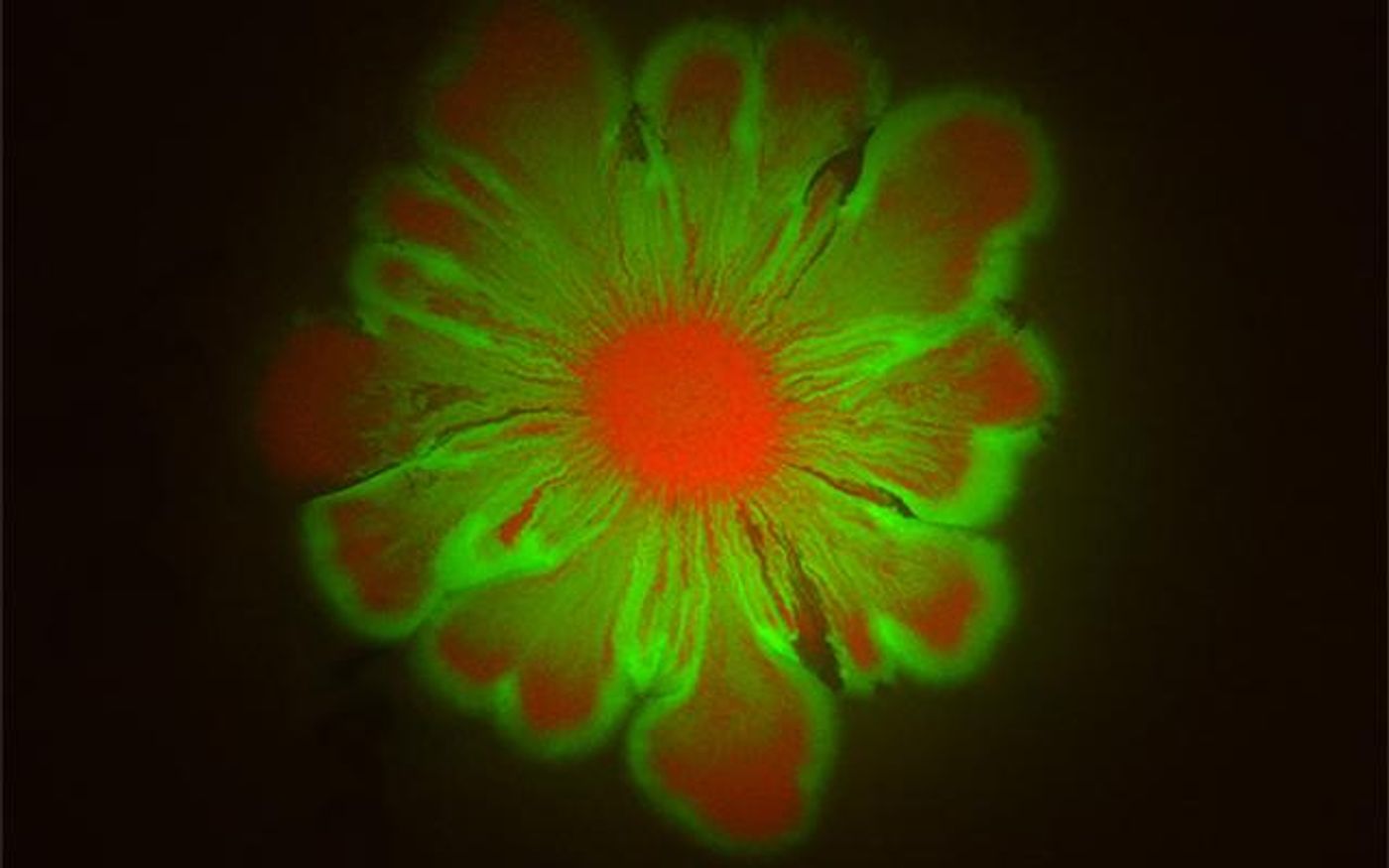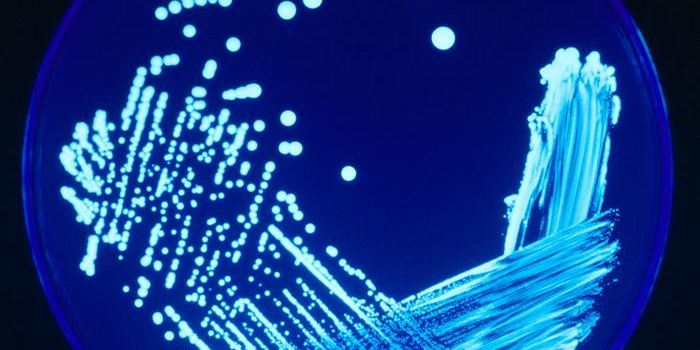Bacterial Growth That is Truly Cultured
Scientists have learned that when certain bacteria are paired together, they create patterns that look like flowers. If Escherichia coli is grown on an agar plate, it barely moves across the surface. Acinetobacter baylyi, on the other hand, spreads out. But if they are grown together, the E. coli catches a ride on the A. baylyi and the bacterial colony creates a flowery pattern in the process, shown in the video below.
"We were actually mixing these two bacterial species for another project, but one morning I found a mysterious flower-like pattern in a petri dish where a day earlier I placed a droplet of the mixture. The beauty of the pattern struck me, and I began to wonder how bacterial cells could interact with each other to become artists," said the lead author of the study, Liyang Xiong, Ph.D.
In this study, which was reported in eLife, the researchers made mathematical models that account for the physical features of the two bacterial strains, including their friction on the agar plate, growth rate, and motility. They found that the pattern is formed at the boundaries of the colony, which gets unstable because E. coli accumulates there and slows the movement down; in places where less E. coli is growing, the motile bacteria can move outwards faster.
These patterns were predicted to emerge when a motile microbe is grown with a strain that doesn't move but has a higher growth rate, and if there is friction between it and the growth surface.
This work may help scientists learn more about the tough bacterial colonies that are known as biofilms. These hardy communities can grow on medical devices, they can be dangerous, and are hard to eliminate.
"Bacterial pattern formation has been an active area of research in the last few decades," said research leader Lev Tsimring, the Associate Director of UC San Diego's BioCircuits Institute. "However, the majority of laboratory studies and theoretical models were focused on the dynamics of single-strain colonies. Most bacteria in natural habitats live in multi-strain communities, and researchers are finally beginning to look for mechanisms controlling their co-habitation. While a number of biochemical mechanisms of inter-species communication and cooperation have been identified, we found that surprising complexity may result from purely physical interaction mechanisms."
Sources: AAAS/Eurekalert! via University of California (UC) San Diego, eLife









